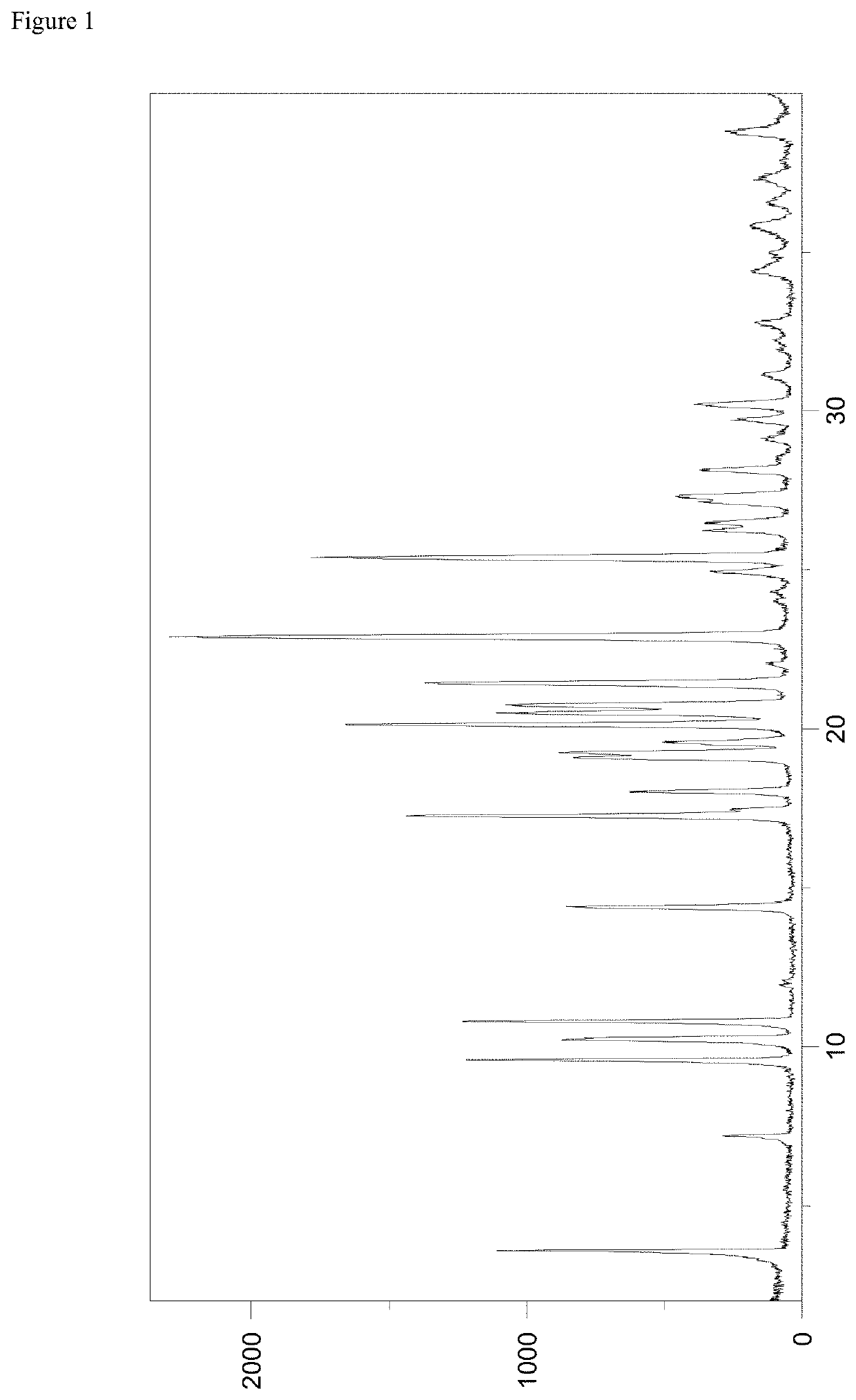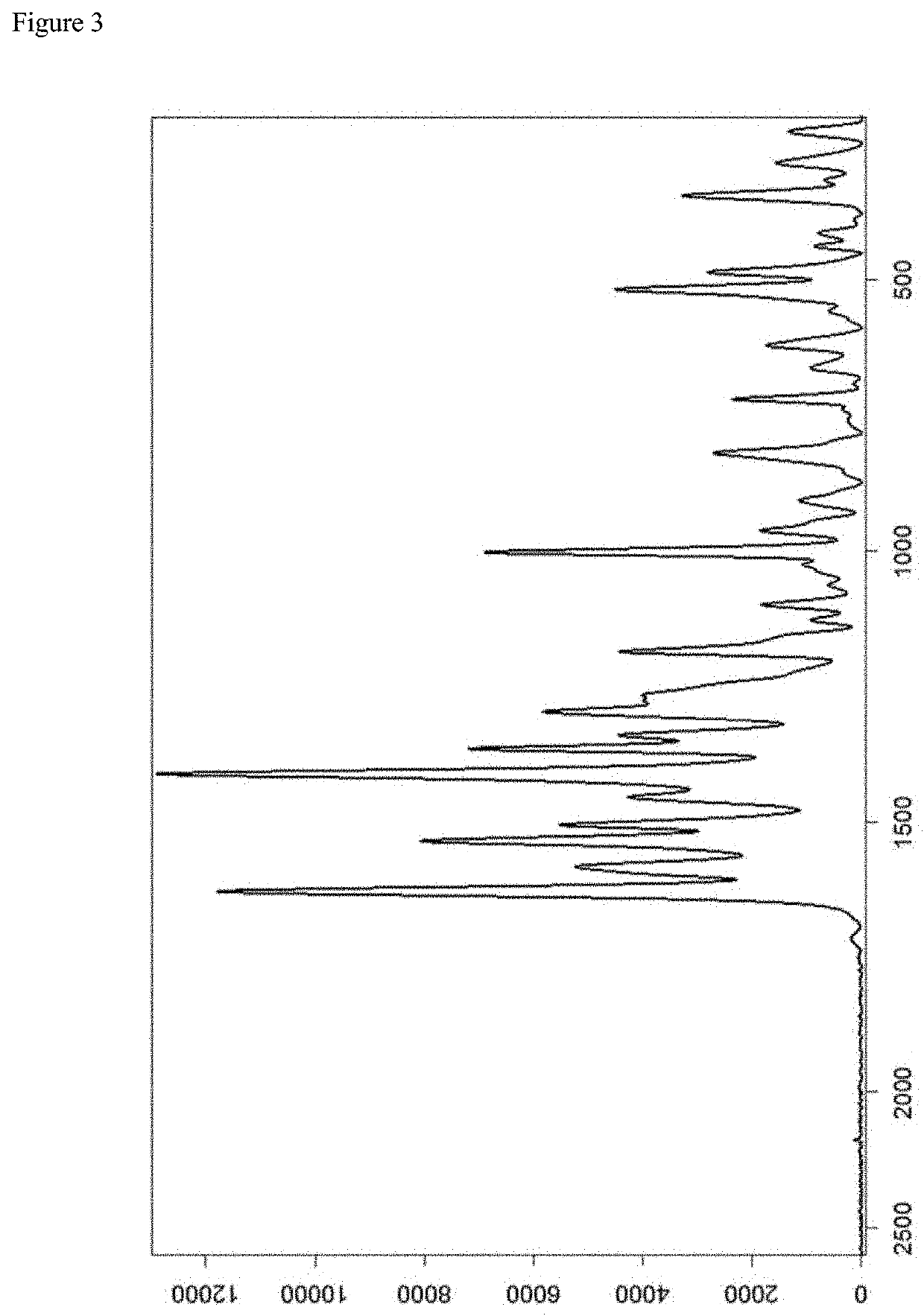Co-crystal of an orally available HIF prolyl hydroxylase inhibitor
a prolyl hydroxylase inhibitor and crystallization technology, which is applied in the field of crystallization of roxadustat with lproline, can solve the problems of serious pharmaceutical consequences and achieve the effect of improving physicochemical properties
- Summary
- Abstract
- Description
- Claims
- Application Information
AI Technical Summary
Benefits of technology
Problems solved by technology
Method used
Image
Examples
example 1
on of the Roxadustat L-Proline Co-Crystal of the Present Invention
[0120]Roxadustat (2.0 g, e.g. prepared according to the method disclosed in example 10 of WO 2014 / 014835 A2) and L-proline (690 mg, commercial sample from Sigma Aldrich) were dissolved at room temperature in a mixture of methanol (40 mL) and THF (40 mL). Diisopropyl ether (40 mL) and seed crystals (20 mg, roxadustat L-proline co-crystals prepared according to example 2 herein) were added to the solution consecutively in order to initiate crystallization. The obtained suspension was stirred for 2 hours before the obtained crystals were collected by filtration and dried at room temperature under vacuum (25 mbar) to obtain 1.8 g (yield: 67% of theory) of the roxadustat L-proline co-crystal according to the present invention.
example 2
on of Roxadustat L-Proline Co-Crystal Seed Crystals
[0121]Roxadustat (100 mg, e.g. prepared according to the method disclosed in example 10 of WO 2014 / 014835 A2) and L-proline (34.5 mg, commercial sample from Sigma Aldrich) were dissolved at room temperature in a mixture of methanol (2 mL) and 1,4-dioxane (2 mL). Diisopropyl ether (5 mL) was added and the solution was allowed to stand in the refrigerator at about 2-8° C. for 16 hours in order to initiate crystallization. The obtained crystals were collected by filtration and dried at room temperature under vacuum (25 mbar) to obtain the roxadustat L-proline co-crystal according to the present invention.
example 3
[0122]The roxadustat L-proline co-crystal according to the present invention was investigated by powder X-ray diffraction, which was performed with a PANalytical X'Pert PRO diffractometer equipped with a theta / theta coupled goniometer in transmission geometry, Cu-Kalpha1,2 radiation (wavelength 0.15419 nm) with a focusing mirror and a solid state PIXcel detector. Diffractograms were recorded at a tube voltage of 45 kV and a tube current of 40 mA, applying a stepsize of 0.013° 2-theta with 40 s per step (255 channels) in the angular range of 2° to 40° 2-Theta at ambient conditions. A typical precision of the 2-Theta values is in the range of ±0.2° 2-Theta, preferably of ±0.1° 2-Theta. Thus, the diffraction peak of the roxadustat L-proline co-crystal of the present invention at 3.6° 2-Theta can appear in the range of from 3.4 to 3.8° 2-Theta, preferably in the range of from 3.5 to 3.7° 2-Theta on most X-ray diffractometers under standard conditions.
[0123]A representativ...
PUM
| Property | Measurement | Unit |
|---|---|---|
| temperature | aaaaa | aaaaa |
| 2-Theta angles | aaaaa | aaaaa |
| wavenumbers | aaaaa | aaaaa |
Abstract
Description
Claims
Application Information
 Login to View More
Login to View More - R&D
- Intellectual Property
- Life Sciences
- Materials
- Tech Scout
- Unparalleled Data Quality
- Higher Quality Content
- 60% Fewer Hallucinations
Browse by: Latest US Patents, China's latest patents, Technical Efficacy Thesaurus, Application Domain, Technology Topic, Popular Technical Reports.
© 2025 PatSnap. All rights reserved.Legal|Privacy policy|Modern Slavery Act Transparency Statement|Sitemap|About US| Contact US: help@patsnap.com



